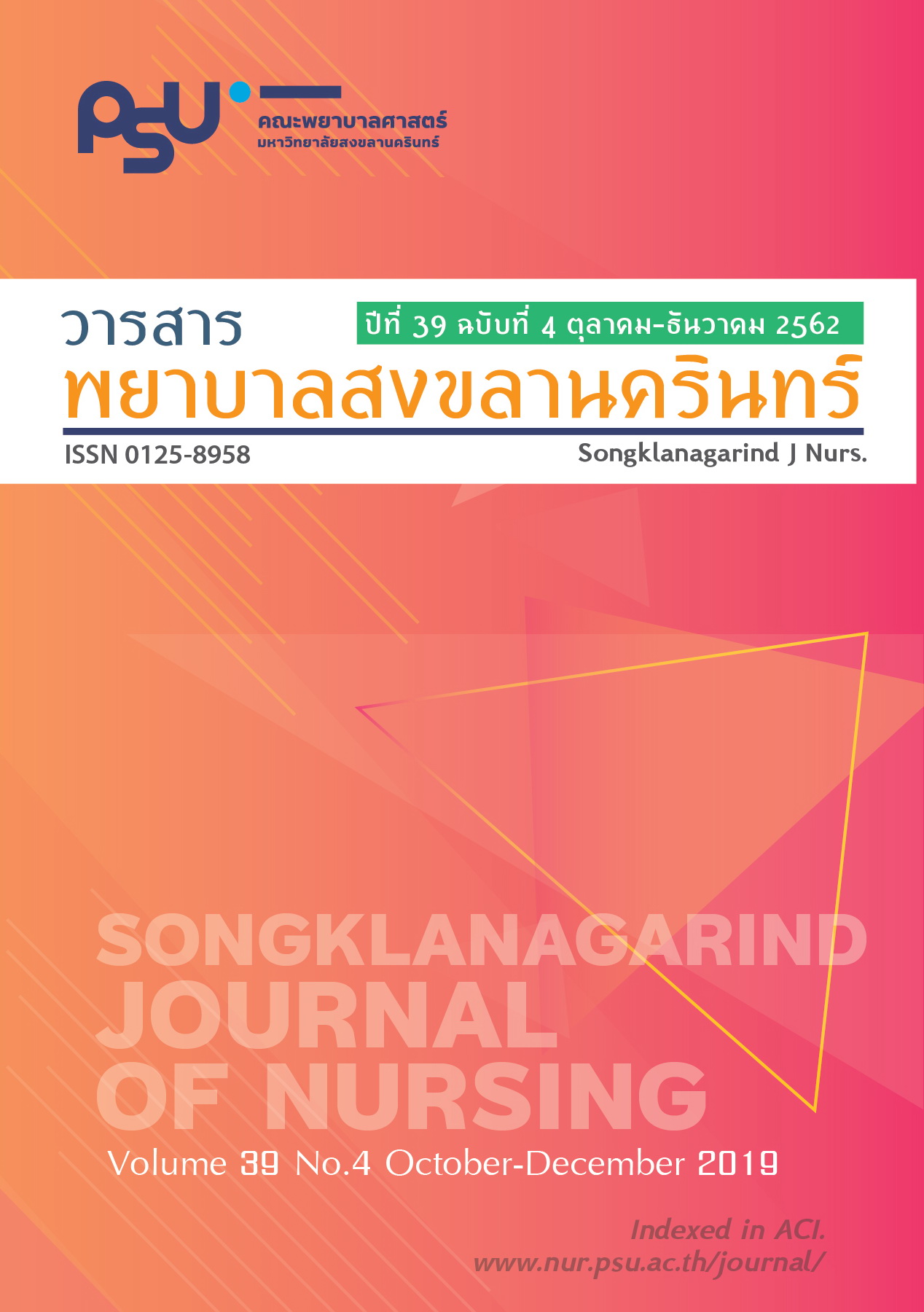A Design of Case Based Learning for Promoting Learning Outcomes in Practicum
Main Article Content
Abstract
Case Based Learning (CBL) is an important method to improve clinical judgment, critical thinking, Case Based Learning (CBL) is an important method to improve clinical judgment, critical thinking,problem solving thinking and teamwork skill. CBL consists of: case selection, case analysis, brainstorming,learning objective formulating, new finding disseminating, result sharing, areas of improvement identifying forclinical practice. Learners are able to apply knowledge for problem solving in practices. There are dimensionsof CBL including: written case study, small group learners as active learners, teachers focusing on significantcontent by using discussing techniques, questioning, guiding learning methods, and learning resources andsupporting learning environment encouraging learner’s thinking independently and widely. Therefore, CBLis used to encourage and develop problem solving skills that are reasonable and to prepare the learner forreal world situations. Learning environment that provides learner’s opportunity to think independently andextensively. Therefore, CBL is used to encourage problem solving skills and to apply in real situation bydeveloping higher thinking levels. Teachers and learners participate in discussion about case study that relateto knowledge from theory, and how to apply to practice. The goal is to better prepare the learners for theactual nursing practice.
Article Details
References
McLean SF. Case-based learning and its application in medical and health-care fields: A review of worldwide literature. J Med Educ Curric Dev. 2016; 3: 39-49.
Nadershahi NA, Bender D, Beck L, Lyon C, Blaseio A. An overview of case-based and problem-based leaning methodologies for dental education. J Dent Educ. 2013; 77: 1300-1305.
Kim K, Choiz J. The relationship between problem solving ability, professional self-concept, and critical thinking disposition of nursing students. J BioSci Biotechnol. 2014; 6: 131-9.
Gunuen N, Durmaz A. A comparison of problem-based and traditional education on nursing students’ locus of control and problem solving skills. Int. J Nurs Knowl. 2014; 25: 110-115.
Korthagen FA. Situated learning theory and the pedagogy of teacher education: Towards an integrative view of teacher behavior and teacher learning. Teaching and Teacher Education. 2010; 26: 98-106.
Thistlewaite JE, Davies D, Ekeocha S. The effectiveness of case based learning in health professional education. A BEME systematic review. Med Teach. 2012; 34: E421-44.
Lee V. What is inquiry-guided learning? New directions for learning. 2012; 129: 5-14.
Rowles CJ, Brigham CG. Strategies to promote critical thinking and active learning. In D. M. Billings & J. A. Halstead (Eds.), Teaching in nursing: A guide for faculty 2005; St. Louis. MO: Elsevier.
Williams B. Case-based learning a review of the literature: Is there scope for this educational paradigm in pre-hospital education? Emerg Med. 2005; 22: 577-81.
Tanner CA. Thinking like a nurse: A research-based model of clinical judgment in nursing. J Nurs Educ. 2006; 45: 204-11.
Abdou FA, Dogham RS. Effect of case based learning on internship critical care nursing students’ clinical judgment. Nurs Health Sci. 2016; 5: 15- 20.
Brown S, Greer M, Matthias A, Swanson M. The use of innovative pedagogies in nursing education: An international perspective. Nurs Educ Perspect. 2014; 30: 153-8
Facione PA. Critical thinking: What it is and why it counts. Millbrae, CA: California Academic Press. 2015.
Mengying Q, Qifeng Y, Mengyan M, Hui H, Yan Y. Application of case-based learning in instructing clinical skills on nursing under-graduates. Biomed J. 2018; 29: 300-4.
Popil, I. Promotion of critical thinking by using case studies as teaching method. Nurse Educ Today. 2010; 31: 204-7.
Barrows HS. Problem-based instruction (PBI) [internet]. 2019 [cited 2019 June 20]. Available from: http://web.cortland.edu/ frieda/id/IDtheories/46.htm
Yoo M, Park J. Effect of case-based learning on the development of graduate nurses’ problem-solving ability. Nurse Educ Today. 2014; 34: 47-51.
Tayem YI. The impact of small group case-based learning on traditional pharmacology teaching. Sultan Qaboos Univ Med J. 2013; 13: 115-20.


